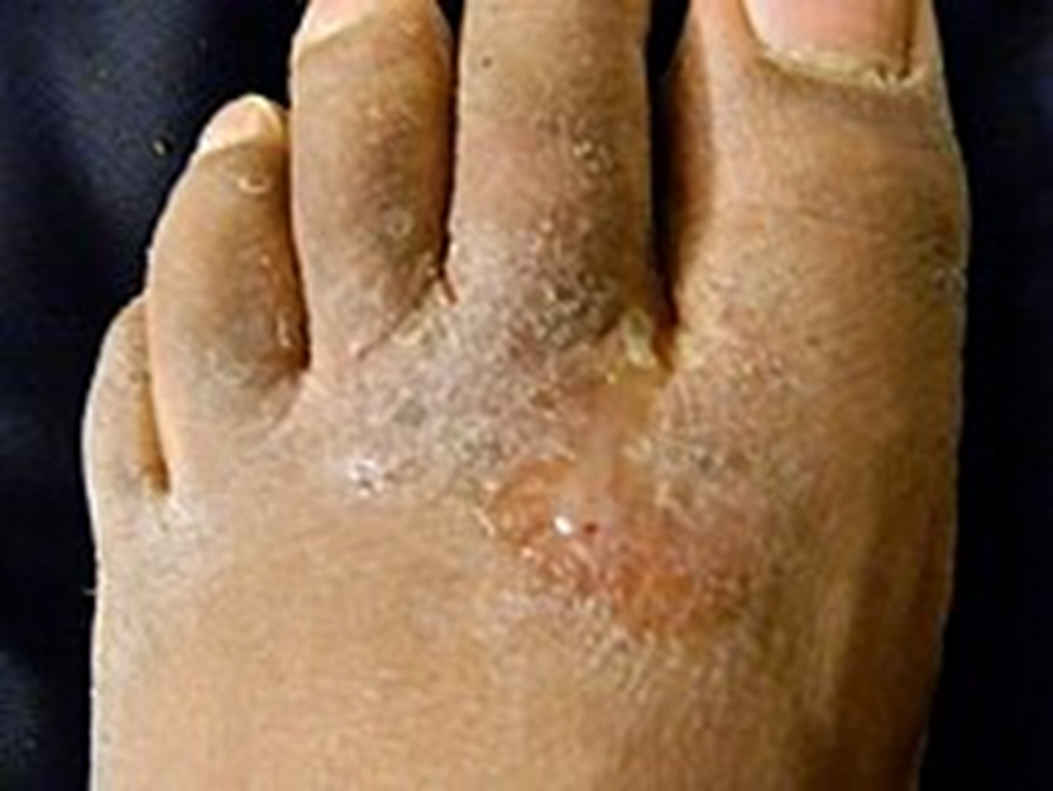A nurse is collecting data from a child who has muscular dystrophy. Which of the following findings should the nurse expect? (Select all that Apply)
Spinal defect and sac-like protrusion
Muscular weakness in lower extremities
Kyphosis of the lower spine
Purposeless, involuntary, abnormal movements
Unsteady waddling gait
Correct Answer : B,C,E
Choice A rationale
Spinal defects and sac-like protrusions are not typically associated with muscular dystrophy. They are more commonly seen in conditions like spina bifida.
Choice B rationale
Muscular weakness in the lower extremities is a common symptom of muscular dystrophy. This is due to the progressive degeneration of muscle fibers, which leads to weakness and loss of muscle mass.
Choice C rationale
Kyphosis of the lower spine can be a complication of muscular dystrophy. As the muscles supporting the spine weaken, the spine can curve abnormally, leading to kyphosis.
Choice D rationale
Purposeless, involuntary, abnormal movements are not typically associated with muscular dystrophy. These symptoms are more commonly seen in neurological conditions like Huntington’s disease or certain types of cerebral palsy.
Choice E rationale
An unsteady waddling gait is often seen in individuals with muscular dystrophy. This is due to the progressive weakness and loss of muscle mass in the lower extremities.
Nursing Test Bank
Naxlex Comprehensive Predictor Exams
Related Questions
Correct Answer is ["A","C","E"]
Explanation
Choice A rationale
Cold compresses can help relieve joint pain associated with juvenile idiopathic arthritis. Cold therapy can reduce inflammation and numb the affected area, providing temporary relief.
Choice B rationale
This is incorrect. Ibuprofen should not be taken on an empty stomach because it can cause stomach upset or even lead to ulcers or bleeding. It is generally recommended to take ibuprofen with food or milk.
Choice C rationale
Performing range of motion exercises can help maintain joint flexibility and muscle strength in children with juvenile idiopathic arthritis. Regular exercise can also improve overall physical function and well-being.
Choice D rationale
While homeschooling may be a consideration for some families, it is not a general recommendation for all children with juvenile idiopathic arthritis. Many children with this condition can attend regular school with some accommodations as needed.
Choice E rationale
This is correct. Providing extra time for completion of activities of daily living (ADLs) can help children with juvenile idiopathic arthritis manage their symptoms and maintain their independence. It is important to allow children to perform tasks at their own pace to avoid causing unnecessary pain or fatigue.
Correct Answer is B
Explanation
Choice A rationale
Shingles, also known as herpes zoster, is a viral infection that causes a painful rash and is caused by the varicella-zoster virus, the same virus that causes chickenpox.
Choice B rationale
Tinea pedis is a foot infection due to a dermatophyte fungus. It is the most common dermatophyte infection and is particularly prevalent in hot, tropical, urban environments. Interdigital involvement is most commonly seen (this presentation is also known as athlete’s foot, although some people use the term for any kind of tinea pedis).
Choice C rationale
Fever blister, also known as cold sores, are caused by the herpes simplex virus. They are small, fluid-filled blisters that develop on the lips or around the mouth.
Choice D rationale
Pinworms are a type of parasite that lives in the lower intestine of humans. They are tiny, narrow worms. They are white and less than a half-inch long.

Whether you are a student looking to ace your exams or a practicing nurse seeking to enhance your expertise , our nursing education contents will empower you with the confidence and competence to make a difference in the lives of patients and become a respected leader in the healthcare field.
Visit Naxlex, invest in your future and unlock endless possibilities with our unparalleled nursing education contents today
Report Wrong Answer on the Current Question
Do you disagree with the answer? If yes, what is your expected answer? Explain.
Kindly be descriptive with the issue you are facing.
